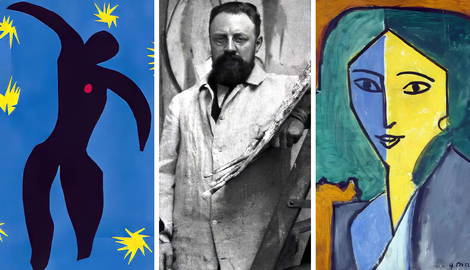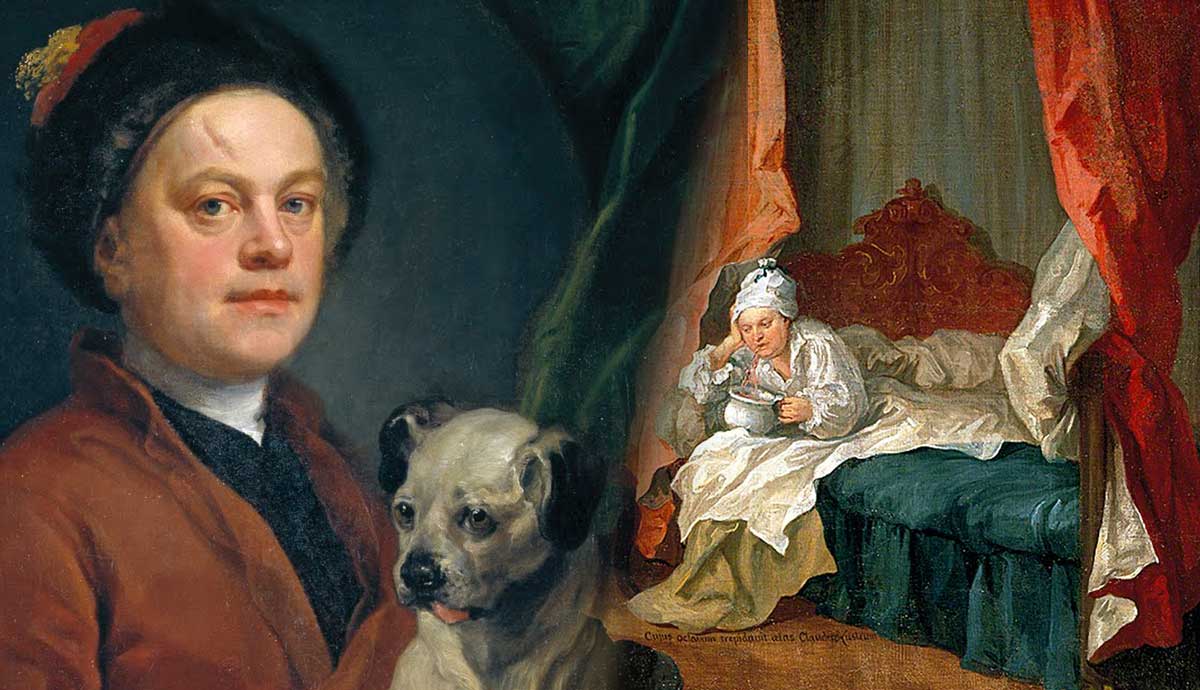
Henri Matisse once wrote, “If my story were ever to be written down truthfully from start to finish it would amaze everyone.” Although it would be impossible to discuss Matisse’s life in detail as biographers do, putting some pieces together can undoubtedly shed light on his character, perspective, thoughts, and art. How did Matisse start painting, what was he passionate about, and what stands behind his vividly colored paintings? Let’s discover 10 facts about Henri Matisse!
1. Appendicitis Changed Henri Matisse’s Life

Henri Matisse initially studied law and worked as a clerk in a legal practice. However, on his path to fulfilling his family’s wishes and continuing his father’s business, Matisse experienced an appendicitis attack in 1889. This unfortunate event led to reduced mobility that persisted for almost a year, preventing the young clerk from continuing his work. Observing another patient passionately painting during his recovery, Matisse’s mother brought Matisse art supplies, hoping the hobby would uplift his spirits and alleviate boredom during his bed rest. This marked the beginning of a lifelong love between Matisse and art.
2. Matisse Was Quite Conventional at First

A few years after the unfortunate incident, Matisse embarked on his art studies at the Academy Julian and the Ecole Nationale des Beaux-Arts. He was guided by mentors such as William-Adolphe Bouguereau and Gustave Moreau. To his dissatisfaction, Bouguereau, associated with the realist art movement, was an academic painter known for his modern interpretations of classical subjects. However, Matisse was known for his disinterest in portraying reality. Instead, he liked to focus on emotions and instinct. Consequently, Matisse was not drawn to Bouguereau’s technique. In return, Bouguereau was not particularly impressed with Matisse, even expressing doubt about his potential success. But he was very wrong.
Gustave Moreau, on the other hand, was a Symbolist painter who focused on biblical and mythological subjects. Matisse initially faced rejection from the Ecole Nationale des Beaux-Arts. Like many other renowned artists who encountered challenges in their early years, he began to regret not pursuing art sooner. However, his luck changed when Gustave Moreau intervened. After witnessing Matisse sketching in the school courtyard, Moreau extended an invitation for the young artist to join his lessons.
Consequently, Matisse started his artistic journey with a more conventional approach. His early focus was on landscapes and still-life works done in a traditional style. He was greatly influenced by Jean-Simeon Chardin, an expert on still life painting, and Nicolas Poussin, who was known for his religious and mythological themes. Over the years, however, Matisse was introduced to Vincent van Gogh’s work and Impressionism, so he changed his style completely. By 1898, Matisse was already painting in a style that would soon become known as Fauvism.
3. Matisse Did Not Mind the Decline of Fauvism

The Fauvist art movement began in 1904, with Henri Matisse and André Derain as its leaders. The first of three Fauvist exhibitions took place in 1905. Matisse, along with other painters who embraced the Les Fauves style, showcased their works at the Salon d’Automne. Their paintings featured vibrant colors, often diverging significantly from the realistic portrayal of the depicted objects. Among the displayed works was Woman with a Hat, Matisse’s most famous painting. It stirred many, mostly negative, reactions from critics.
By 1908, almost all artists in the group moved away from Fauvism. It is now widely regarded as a transitional movement that led to future developments in modern art. Henri Matisse himself wasn’t too disappointed by the decline of Fauvism. He was actually concerned with finding his style. In fact, most of his great works were created between 1906 and 1917. During those years, Matisse traveled a lot, immersing himself in different cultures.
4. Matisse Was Also a Sculptor

Matisse likely ventured into sculpture for the first time in 1892, collaborating with George Lorgeoux on clay medallions featuring Camille Joblaud’s profile. Over the years, he repeatedly turned to sculpture. Unfortunately, despite being no less impressive than his paintings, Matisse’s sculptures often stand in the shadow of his other works.
Matisse made over 70 sculptures. They served as an excellent means to study forms in three-dimensional shapes before translating them onto canvases. The sculptures typically began in clay and were later cast in bronze. Most were relatively small but nonetheless fascinating. His largest sculptures were part of The Black Series, which featured four bas-relief sculptures modeled between 1909 and 1930.
5. Matisse Also Made Costumes and Stage Sets

Matisse also left a significant mark as a designer. However, it’s said that when he first delved into costume design in 1919, he wasn’t entirely pleased with the process, often expressing his dissatisfaction to his wife. It seemed that his vision for the costumes didn’t align with the expectations of the directors he was working with. Despite the challenges, Matisse designed costumes and set stages for various performances, including The Nightingale choreographed by Leonid Massine.
For a ballet show called Song of the Nightingale, Matisse envisioned vibrant and lively costumes, contrary to the Russians’ preferences for black and gold. Three of his costumes are displayed at the Museum of Modern Art in Paris in the Henri Matisse room. While he was working on his costume and set designs, Matisse discovered his passion for cutouts, which would resurface in the early 1940s. Later in life, between 1937 and 1938, he collaborated with the Ballets Russes once again, designing their costumes and stage sets.
6. Matisse Was an Avid Traveler

Matisse was an avid traveler. The places he visited had a major influence on his art. He traveled around France, focusing particularly on the southern part of the country. The region, much different from the North, left a visible mark on his perception of light and color. In fact, Hilary Spurling’s biography of Henri Matisse is divided into chapters named based on the places he lived in. This makes it quite clear that Matisse enjoyed moving from one place to another, all the while looking for inspiration.
When he felt financially comfortable enough to travel, Matisse went to Algeria, Spain, Italy, Germany, and Morocco. He also visited Russia, England, and the United States. The painter also spent some time in Tahiti where he was utterly amazed by the lagoons and the exotic wildlife. They served as inspiration for some of his larger works, including Oceania the Sea and Oceania the Sky.
7. He Had a Tumultuous Relationship with Picasso

The friendly yet rivalrous relationship between Henri Matisse and Pablo Picasso began in 1906. Despite their rivalry, Matisse and Picasso meant very much to each other. They often engaged in debates and even criticized or disapproved of each other’s work. Picasso seems to have shared slightly more sarcastic comments with Matisse, who, in turn, was very patient with his younger friend. For example, Picasso commented rather boldly on Matisse’s decision to work on the decoration for the chapel in Vence. He thought that if Matisse was a non-believer, he should not have accepted this project.
8. Matisse Discovered His Passion for Cutouts After His Cancer Diagnosis

In 1941, Matisse was diagnosed with cancer. He underwent surgery, which, although successful, resulted in various complications that kept him in bed for a long time. Because of this, the artist was not able to paint or sculpt. Instead, he turned to decoupage, which implied using paper cutouts to form various compositions. At first, he merely experimented with cutouts, producing only small pieces. As he became more and more passionate about this, he took his cutouts to a much bigger scale, eventually making mural-sized works. As it turned out, this form of art became Matisse’s favorite. He continued producing cutouts until he died.
Jazz is by far his most famous cutout work. It is an art book with many colorful paper collages presented alongside Matisse’s thoughts. He worked on these cutouts for two years. These images are inspired by mythological subjects, the circus, and travels. At first, Matisse suggested that the book should be called The Circus. However, it was later changed to Jazz because it linked art and musical improvisation.
9. Matisse Was an Animal Lover

Matisse had a special place in his heart reserved only for animals like dogs, birds, and cats. He owned hundreds of birds—mostly songbirds and doves—which were taken care of by an avian specialist hired by the artist. Doves also served as an inspiration for many of his artworks. Matisse also had three cats called Minouche, Puce, and Coussi. His 1910 painting entitled Girl with a Black Cat depicts his daughter holding a black cat on her lap. Four years later, he painted a cat trying to catch fish. Almost three decades later, he made some incredible cutouts portraying cats.
10. Henri Matisse Became Very Close With His Assistant

Henri Matisse met Lydia Delectorskaya in 1932 when he offered her a job as a studio assistant who also took care of his house. Shortly after she started working for the family, the painter asked her to pose for him. Since they spent so much time together, Matisse and Delectorskaya quickly became close companions. This, of course, did not make Matisse’s wife, Amélie, very happy. Whether she thought they were having an affair or not remains unknown. Amélie had devoted her whole life to her husband’s work, making tremendous sacrifices. Now, Lydia seemed to have taken her place in this regard. So, Amélie gave her husband an ultimatum—it was either her or Lydia. The artist chose his wife, so Lydia was devastated and she attempted suicide.

Fortunately, she did not die. Amélie left Matisse anyway, and the painter asked Lydia to become his assistant again. She continued working for him for the rest of his life, serving as a muse, an assistant, and, most importantly, a companion. In 2010, the Matisse Museum held an exhibition dedicated to Lydia, honoring her commitment to Matisse during the last decades of his life.










